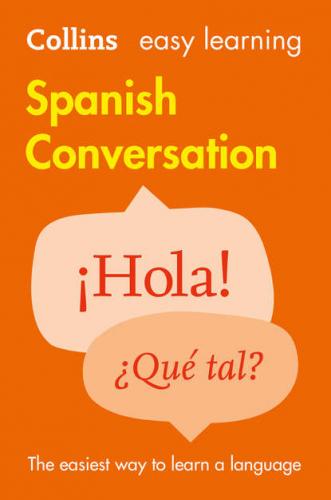Would it be ok if…?
| ¿No te importa que venga un amigo mío? | Would it be ok if I brought a friend of mine? |
| ¿No te importa si lo dejamos para la semana que viene? | Would it be ok if we left it till next week? |
| ¿No os importa si llegamos un poco más tarde? | Would it be ok if we got there a bit later? |
To say what would suit you better, you can use me vendría mejor (it would suit me better). vendría comes from venir (to come).
It would suit me better…
| Me vendría mejor quedar contigo allí. | It would suit me better to meet you there. |
| ¿Te vendría mejor el sábado por la noche? | Would Saturday evening suit you better? |
| El viernes me vendría mejor. | Friday would be better for me. |
| Me viene mejor si quedamos un poco más tarde. | It would be better for me if we made it a bit later. |
| ¿Te viene mejor si lo dejamos para mañana? | Would it suit you better if we left it till tomorrow? |
One of the pieces of information you may need to find out is where things are. Remember that when you ask where something is, estar is the verb you generally use.
Where’s…?
| Estoy buscando la calle Teruel, ¿sabe usted dónde está? | I’m looking for the calle Teruel. Do you know where it is? |
| ¿Sabe usted dónde está el restaurante Don Alfonso? | Do you know where the restaurant Don Alfonso is? |
| Perdone, ¿dónde están los servicios? | Excuse me, where are the toilets? |
Before you decide where to eat or what to eat, you may want to find out what the restaurant or the food is like. Don’t forget that Spanish has two verbs for to be: ser and estar. For more on these verbs, see here.
Is…?
| ¿Es un restaurante muy caro? | Is it a very expensive restaurant? |
| ¿Es un plato típico de la zona? | Is it a typical local dish? |
| ¿Es apto para vegetarianos? | Is it suitable for vegetarians? |
| ¿La bebida está incluida en el menú de 10 euros? | Are drinks included in the 10-euro set menu? |
To ask more specifically about the menu, you can use ¿Qué…? (What…?).
What…?
| ¿Con qué lo sirven? | What does it come with? |
| ¿Qué lleva? | What’s in it? |
| Las gambas en gabardina, ¿qué son? | What are gambas en gabardina? |
| ¿Qué hay de postre? | What is there for dessert? |
If you want to ask the price of something, you can use ¿Cuánto vale…? (How much is…?).
How much is…?
| ¿Cuánto vale una botella de vino de la casa? | How much is a bottle of house wine? |
| ¿Cuánto vale el menú del día? | How much is the set menu? |
If you haven’t already got a reservation at the restaurant where you’re planning to eat, you’ll need to ask if there’s a table you can have. ¿Tienen…? is the right verb form to use whenever asking if something is available in hotels, restaurants and shops. It is from the verb tener. For more information on tener, see here.
Have you got…?
| ¿Tienen una mesa para tres? | Have you got a table for three, please? |
| ¿Tienen alguna mesa libre para esta noche? | Have you got a table available for tonight? |
| ¿Tienen menú del día? | Do you have a set menu? |
| ¿Tienen la carta en inglés? | Have you got the menu in English? |
| ¿Tienen vino de la casa? | Do you have a house wine? |
| ¿Tienen menú infantil? | Have you got a children’s menu? |
| Una mesa para dos, por favor. | A table for two, please. |
¿LO SABÍAS?
Of course if you have made a reservation, instead of asking if there’s a table free, you’ll be able to say he reservado una mesa para dos a nombre de… (I’ve booked a table for two in the name of…).
To say what you’d like or what you want, you can use either quisiera or quiero (I’d like). They are both from the verb querer. For more information on querer, see here. To attract the waiter’s attention, you just need to say ¿Puede venir, por favor? (Can you come over?) or ¡Oiga, por favor! (Excuse me, please!).
I’d like…
| Quisiera reservar mesa para las 9.00. | I’d like to book a table for 9 o’clock. |
| Quisiera pedir. | I'd like to order. |
| Quisiera dos cafés más, por favor. | I’d like two more coffees, please. |
| Yo quiero una tortilla. | I'd like an omelette. |
| Yo quiero gazpacho. | I'd like gazpacho. |
| Quiero el bistec muy hecho. | I'd like my steak well done. |
¿LO SABÍAS?
To a Spanish ear, you may sound unnatural, overformal and foreign if you pepper your requests with por favor the way we use please in English. So don’t overuse it, and don’t keep repeating it.
To say what you’ve chosen, you can use voy a tomar (I’ll have).
I’ll have…
| De primero voy a tomar sopa. | As a starter I'll have soup. |
| De segundo voy a tomar ternera. | For the main course I'll have veal. |
| De postre voy a tomar flan. | For dessert I’ll have crème caramel. |
| Para beber vamos a tomar vino blanco. | We'll
|
